LG OLED77Z2 Review
A very, very expensive 8K TV
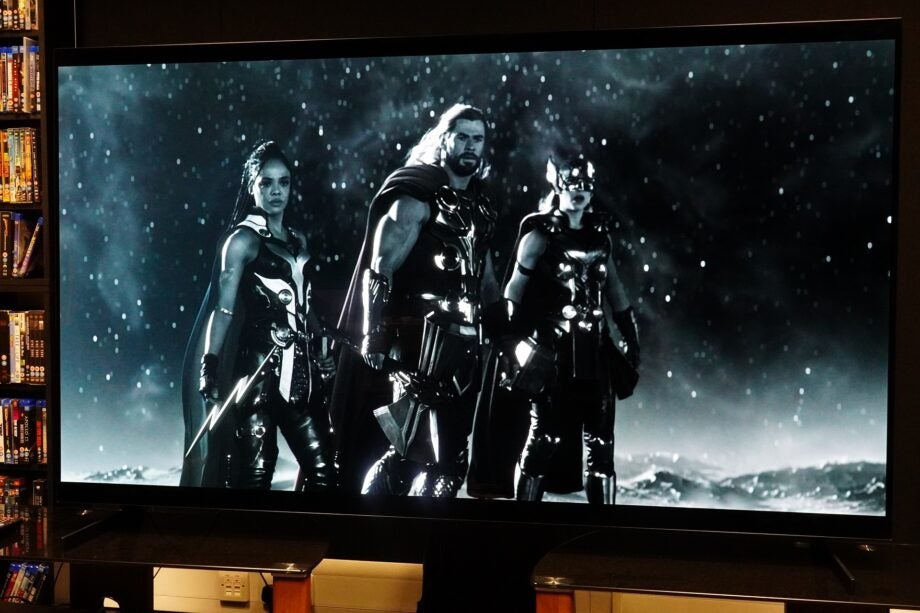

Verdict
Another well-featured OLED from LG but despite its 8K credentials, this TV doesn’t feel like a big step up from the 4K models. In light of its stratospheric asking price, the LG OLED77Z2 doesn’t hit the bullseye of value and performance.
Pros
- Looks great with Dolby Vision content
- Minimalist design
- Well-suited for gaming
- Big-screen viewing
Cons
- Seriously expensive
- Not as bright or as sharp an image as you might expect
- Upscaling could be better
- Some apps hidden behind LG account sign-up
Availability
- UKRRP: £11999
- USARRP: $9999
- EuropeRRP: €14999
- CanadaRRP: CA$19999
- Australiaunavailable
Key Features
- Dolby Vision IQAdapts the brightness of HDR performance to match room lighting
- Refresh ratesSupports 4K/120Hz and 8K/60Hz
- α9 Gen 5 AI ProcessorImproves depth, detail and sharpness
Introduction
Is the 8K future promised by TV manufacturers showing signs of being derailed? LG, one of the drivers behind its adoption, would wag a finger in your direction and say no.
But there’s no doubting that of the 8K TVs in the market, 8K OLED has a larger hurdle than most to vault over as they’re relatively more complex and expensive to produce than their LCD counterparts.
But for the time being, all LG needs to do is offer a convincing enough proposition for viewers to jump onboard the slightly idling 8K train. Does the OLED77Z2 offer enough reasons to appeal? Let’s find out.
Design
- Slim depth
- Heavy design
- Minimalist aesthetic
The LG OLED77Z2 shares the same aesthetic as the G2 OLED with its (mostly) uniform flat rear panel (32.2mm depth) that should make for a neater install on a wall.
There are covers on the back panel to cover up the connections and wall-brackets, with areas to route cables through to keep things tidy. Connections are placed in side- and downward facing positions.
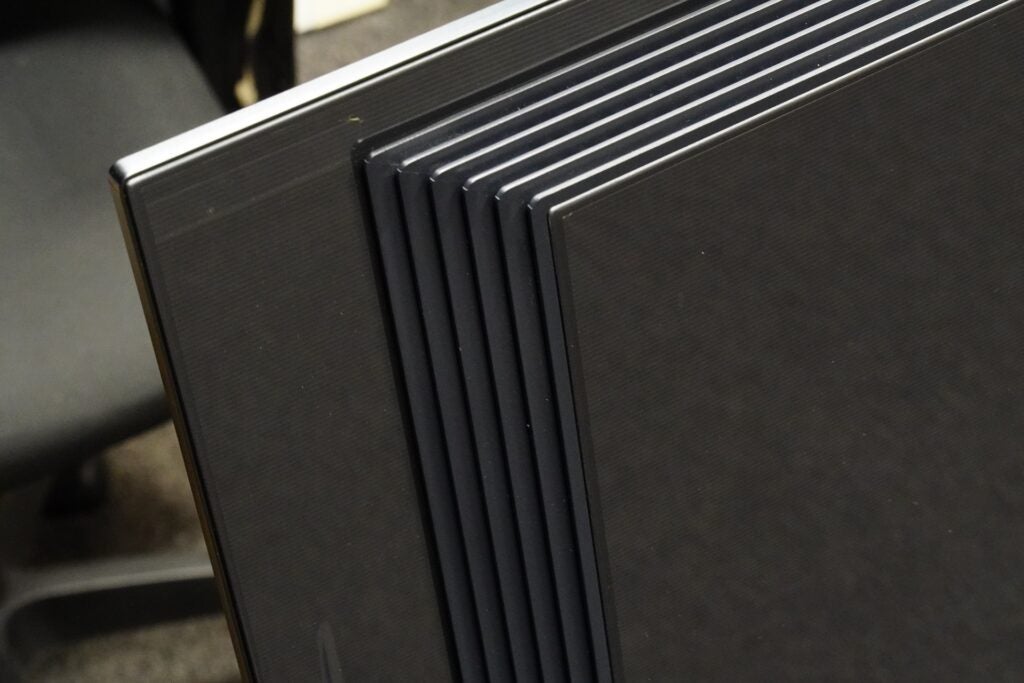
The difference to the G2 is the LG Z2 comes with feet, with the option of positioning it on a TV stand. It needs to be big considering the 77-inch size, chiefly as the feet are placed at either end of the TV (I had to use two stands).
Assembling the TV is a case of attaching the feet – a simple and quick process in itself – but the weight (43.4kg) ensures multiple people are needed to haul it into place.
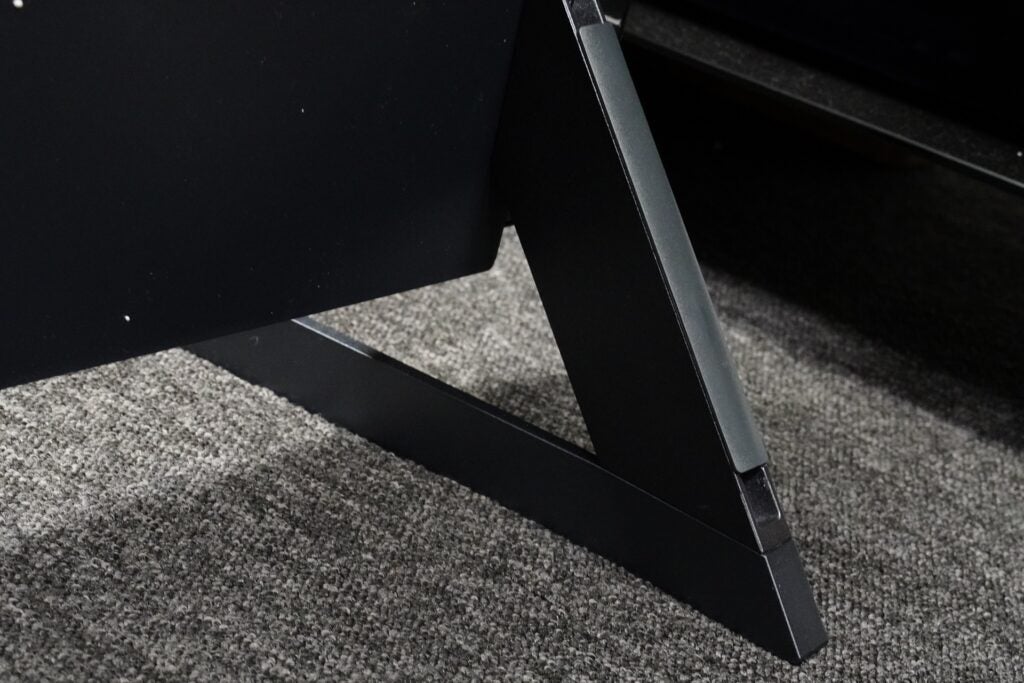
The feet are sturdy enough to support the weight but can bend when shifting the TV (a nudge puts them back in place). Like LG’s other OLEDs, what you see is virtually all screen, with the bezel edges kept to a minimum. It’s in-keeping with the minimalist vibe of the 4K OLEDs, except at this size it’s an epic viewing experience.
Interface
- New Gaming shelf for cloud gaming apps
- Support for Freeview Play
- Some apps locked behind LG account sign-up
- Premium remote control
After the cold-water shock of LG moving from its app bar to a full-screen interface, I’m gradually warming to the new-look webOS. A few changes have been made since I reviewed the OLED65G2, as LG pitches the webOS platform as an ever-evolving smart experience.
The changes relate to the arrangement of icons and rows in the hub area. The box for LG account sign-up is now an icon at the top of the screen, and the (rather pointless) weather update box is gone.
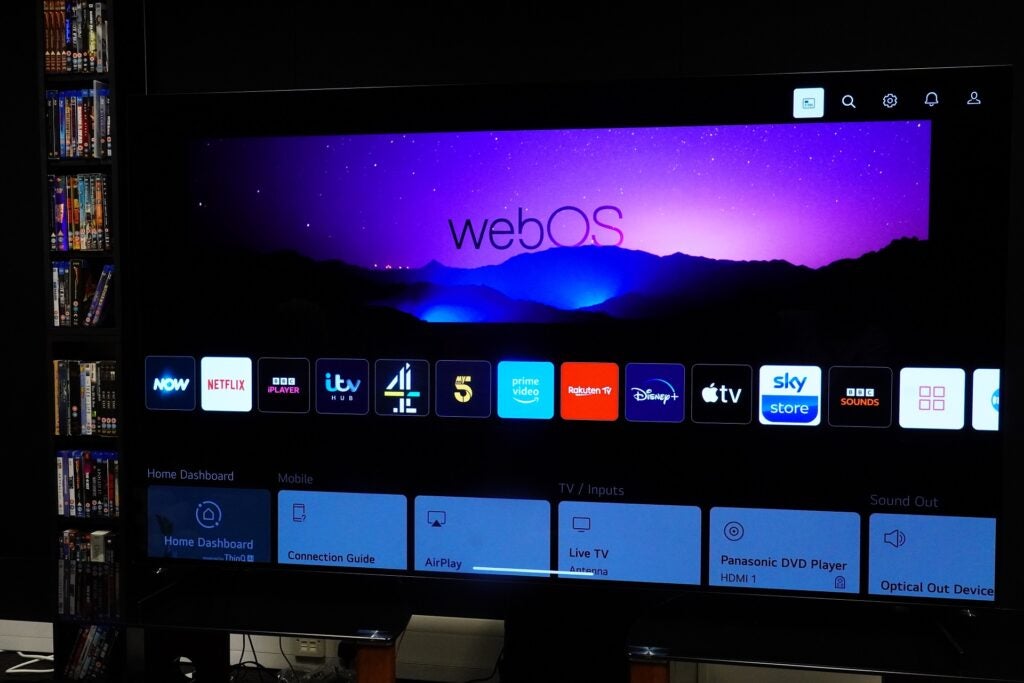
They’ve been replaced by a bigger ad that features curated content, and beneath that is a ‘Trending Now’ bar followed by the more traditional app row, inputs and more rows of curated content in the new gaming shelf (for cloud gaming) and selected streaming video apps. It’s not a massive change, but adds up to a less cluttered interface.
Apps are provided in the usual big guns to lesser-known ones like PBS America, but in an odd move, apps such as YouTube, Britbox, Twitch, DAZN and more are locked behind sign-up for an LG account.
The Freeview Play apps aren’t restricted, nor are the main SVOD apps such as Netflix, Prime Video and Apple TV, but it’s nevertheless galling given YouTube hosts 8K content on its platform, which you now can’t access without an LG account.
As part of LG’s high-end Signature range, the remote is an upgrade in build and feel; heftier in weight with a metal brushed finish that’s more premium.
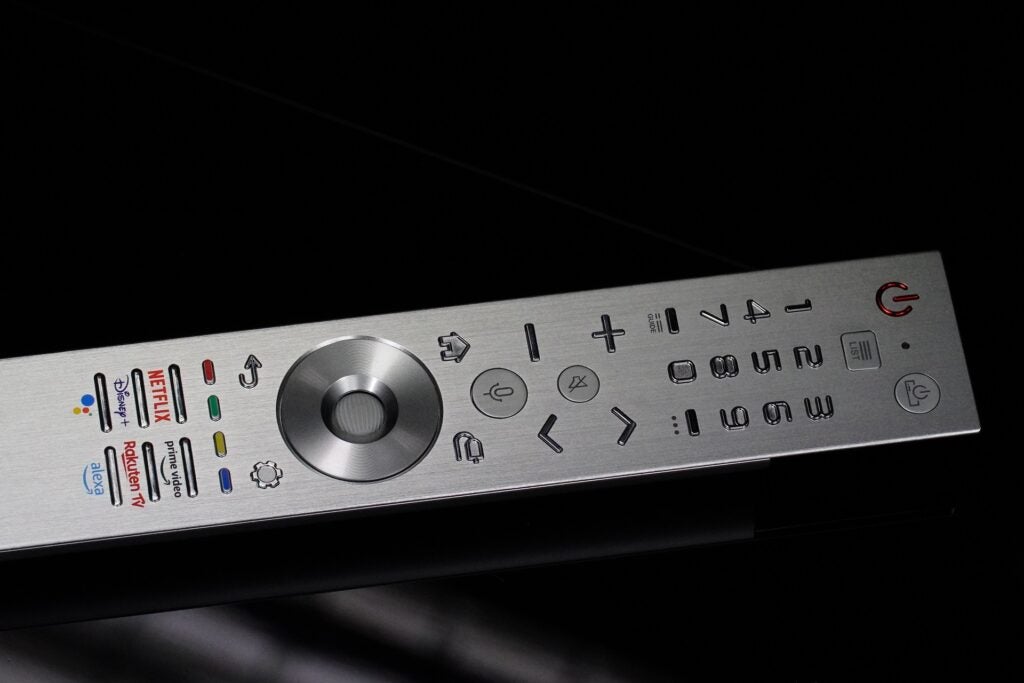
It still supports the pointer as a means of navigation, and I do like the cushy feel of button presses. I’m not, however, a fan of the battery compartment that requires the same ejector tool needed for smartphone sim trays. One isn’t provided as far as I can tell.
Features
- 8K/60Hz refresh rates
- Excellent gaming features
Variable Refresh Rate (VRR) and Auto Low Latency Mode (ALLM) are covered across all HDMI inputs, as are 8K/60Hz refresh rates. With Nvidia G-Sync and AMD FreeSync Premium VRR onboard along with HDMI VRR, the LG Z2 OLED is covered for optimal performance with PCs and gaming consoles.
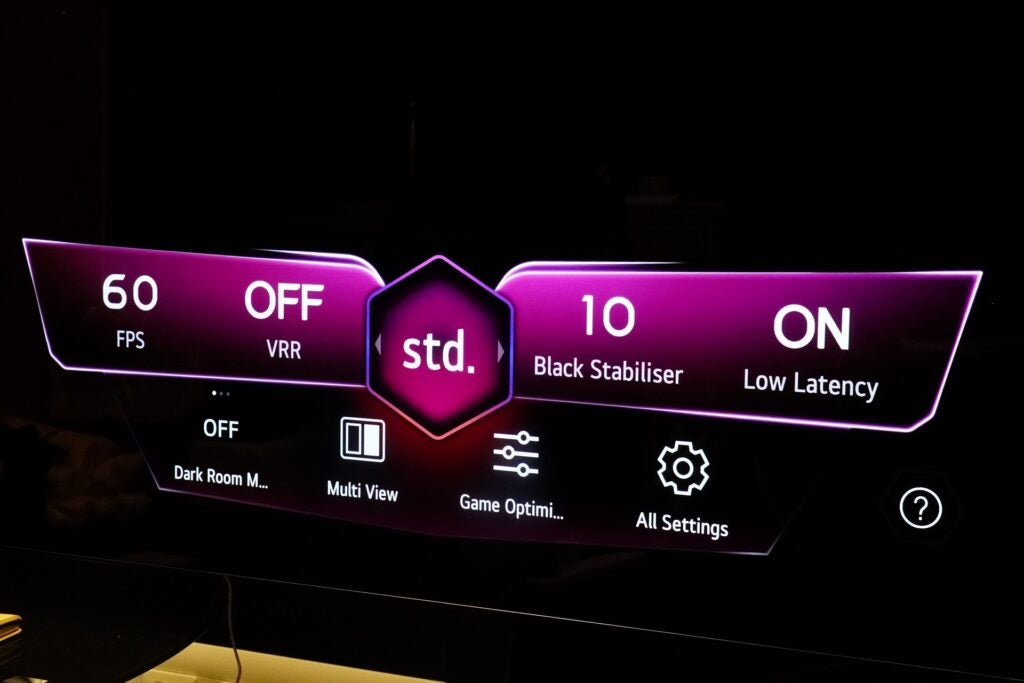
In the cloud there’s Nvidia GeForce NOW, Google Stadia, Blacknut and Utomik Cloud (arriving in November 2022). Google Stadia will join the Google cemetery in January 2023 and, as far as I can surmise, there’s no native app for Xbox Game Pass (which is available on Samsung Tizen TVs).
The Z2 OLED includes the HGiG standard for best practice methods with HDR tone-mapping for games, and there’s Dolby Vision Game mode for improved picture performance and VRR skills with compatible games. I measured latency at 13.5ms, which is the same ballpark as the G2 and C2.
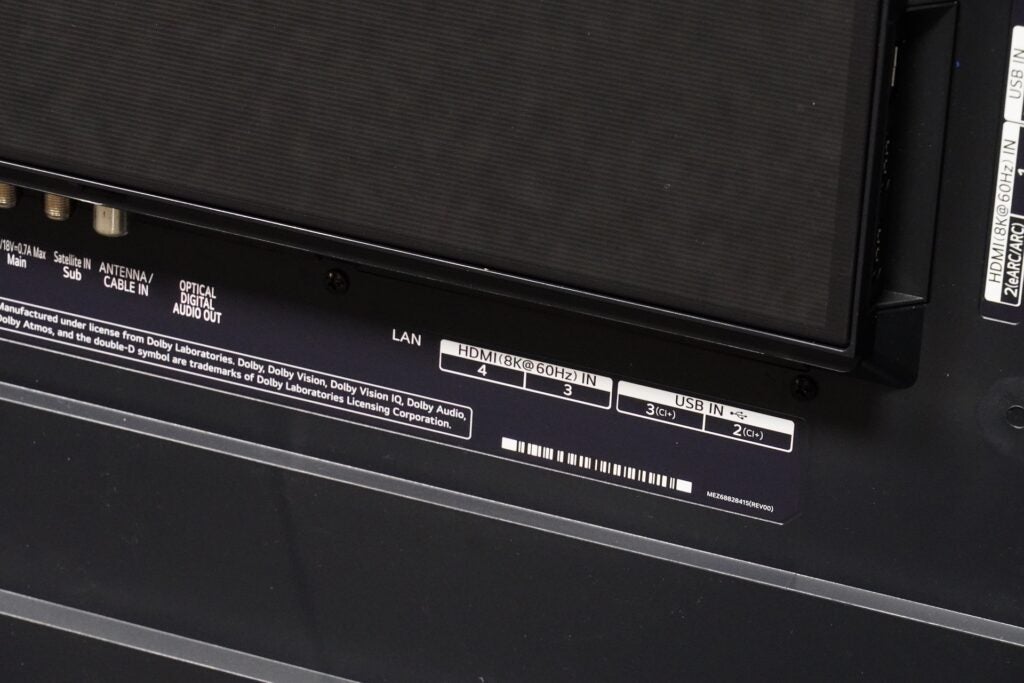
There are four HDMI 2.1 inputs, a headphone out, digital optical out, Ethernet socket, satellite and aerial inputs, three USB 2.0, and a CI+ 1.4 (Common Interface) slot. Wireless connections are covered by Wi-Fi, Bluetooth 5.0, AirPlay 2, Chromecast, WiSA (Wireless Speaker & Audio) and Bluetooth Surround Ready.
For smarts, LG webOS is well catered for with Amazon Alexa, Google Assistant and LG’s own ThinQ service (used mainly for search). Where image retention and burn-in are concerned, the OLED77Z2 can deal with in the form of Pixel Cleaning (which checks and adjusts each pixel), Screen Move (which shifts the entire image slightly), and Logo Brightness (automatically reduces the brightness of logo and subtitles).
Picture Quality
- Vibrant colours with Dolby Vision
- Not as bright or as sharp as you might expect
- Upscaling doesn’t really enhance 4K content
8K works best on big screens; the higher resolution and increased pixel density wrings out more detail than an equivalently sized 4K screen. At this size the viewing experience is epic, and Trusted Reviews staffers who walked in and saw the LG Z2 in action marvelled at the scope of its images.
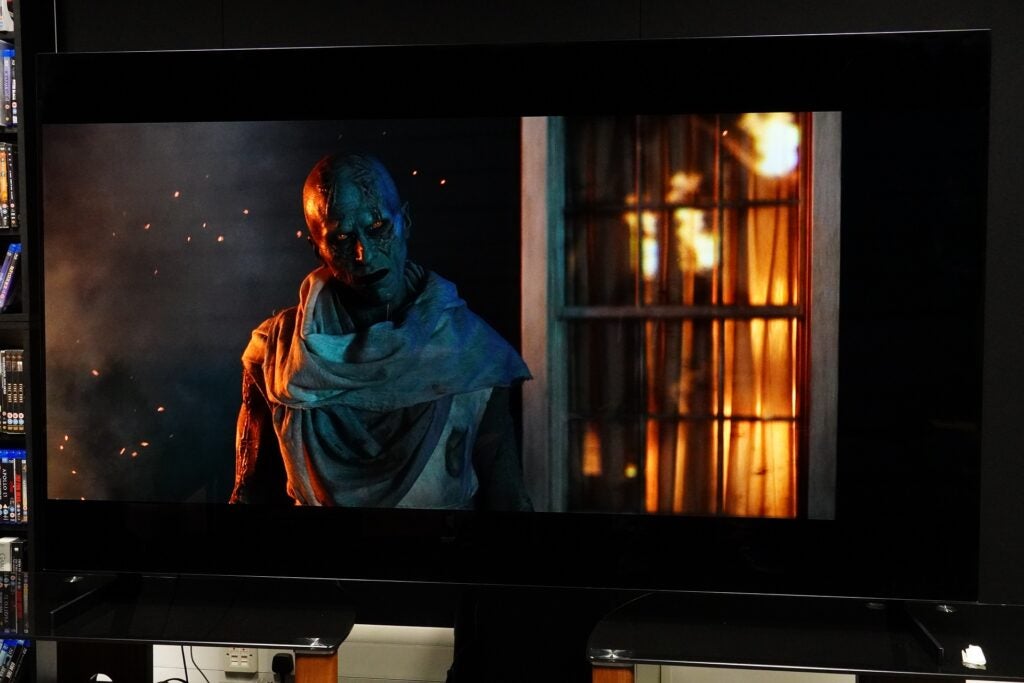
In full motion, the OLED77Z2 is capable of lush, cinematic images. Thor: Love & Thunder looks mighty indeed, resplendent in a Dolby Vision Disney+ guise. Colours are vibrantly handled, the reds of Thor and Lady Thor’s capes richly conveyed, and detail levels impress in the IMAX framed sequences.
There’s some lovely contrast in the dimly lit chamber scenes of The Last Duel (4K Blu-ray). Retrieval of detail is again high, the Z2 OLED easily uncovers facial blemishes on actors from ugly scars to beauty spots; from the scrapes in battle armour to the nooks and crannies of moats and castles to the foliage of dense forests in Scotland – it’s a lovely looking image expressed on a big canvas.
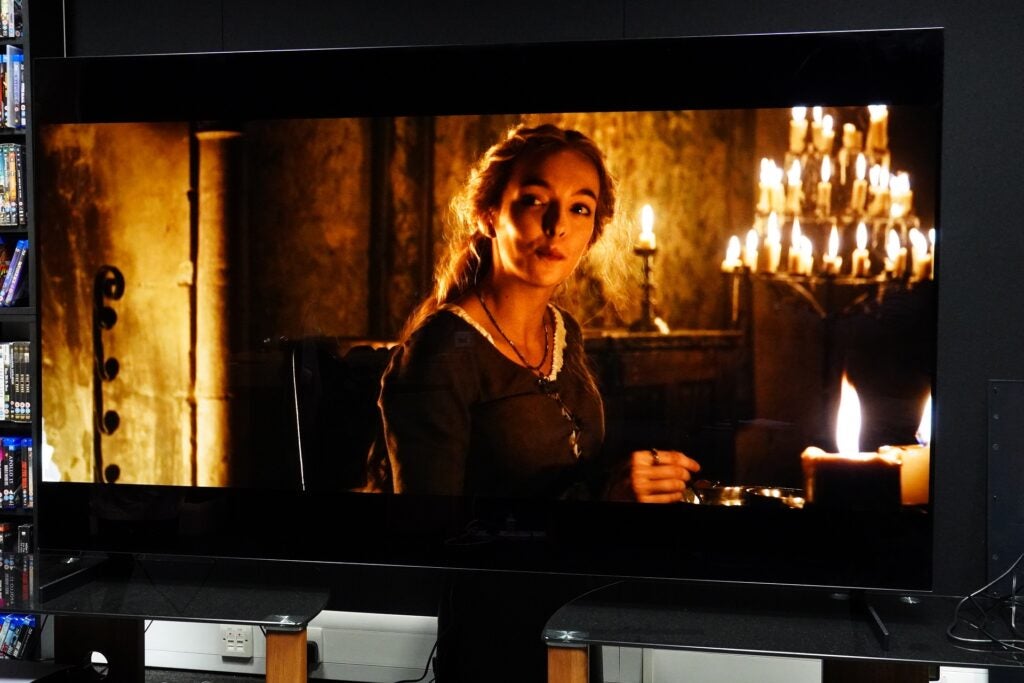
The same applies to Avengers: Infinity War, all the cracks of Thanos’ battle-hardened armour in the opening scene filtering through, as well as the sweat and dirt on the faces of Thor and Heimdall that amps up the scene’s vivid sense of realism and fidelity. Marry this set with Dolby Vision content and the OLED77Z2 frequently stuns.
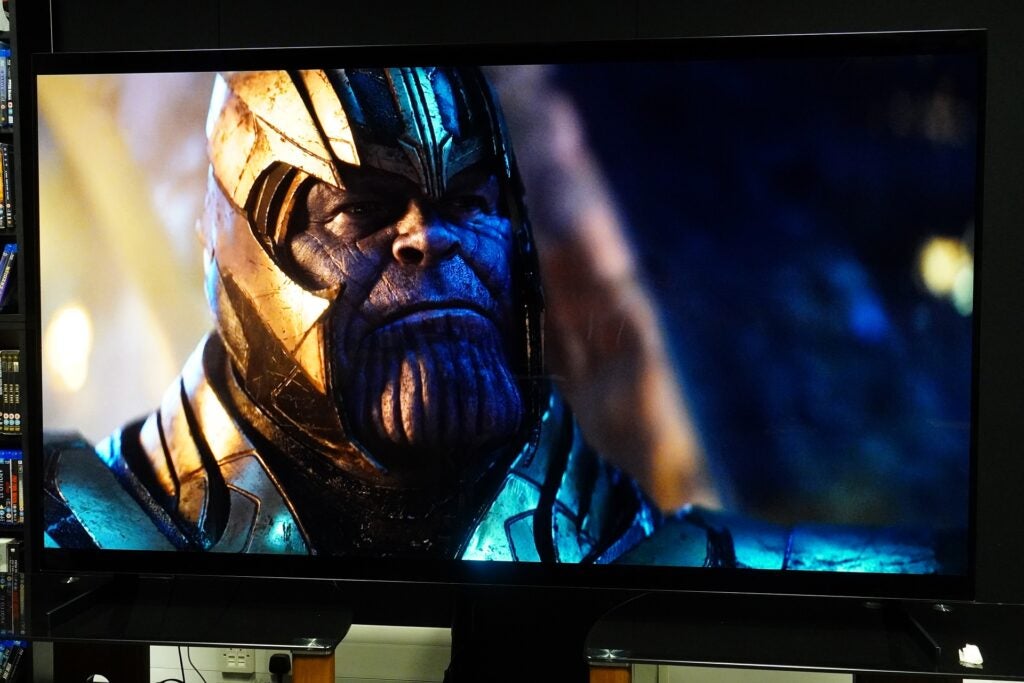
And while the scale of TV shows and movies on this screen is undoubtedly impressive, there is also something amiss. Yes, movies look great, but they don’t feel as if they’re taking advantage of the 8K resolution. Two factors that I think play into this are brightness and the set’s upscaling.
The LG OLED77Z2 doesn’t feature the OLED Evo Booster Brightness technology seen in the C2 and G2. I measured brightness at 859 nits in its Standard mode (959 nits on a 5% window in Vivid mode), which falls between the C2 and the G2 in terms of peak HDR brightness.
Highlights look a little dimmer than the G2, and the LG Z2 OLED doesn’t exude the same intensity found on Samsung’s brighter 8K LCD sets. The G2 OLED looks more impactful by comparison, though that may be down to its comparatively smaller screen.
With little native 8K content available, 8K sets have positioned themselves as making less-than 8K content look better. With the Z2’s α9 Gen5 AI processor 8K with AI 8K upscaling in action there’s an abundance of detail to lap up in a film such as Midsommar but I also find it lacks a degree of sharpness.
It is not by any means a soft looking image – Midsommar is rendered in a cinematic fashion, but the Z2 does not feel a dramatic leap up from LG’s 4K OLEDs.
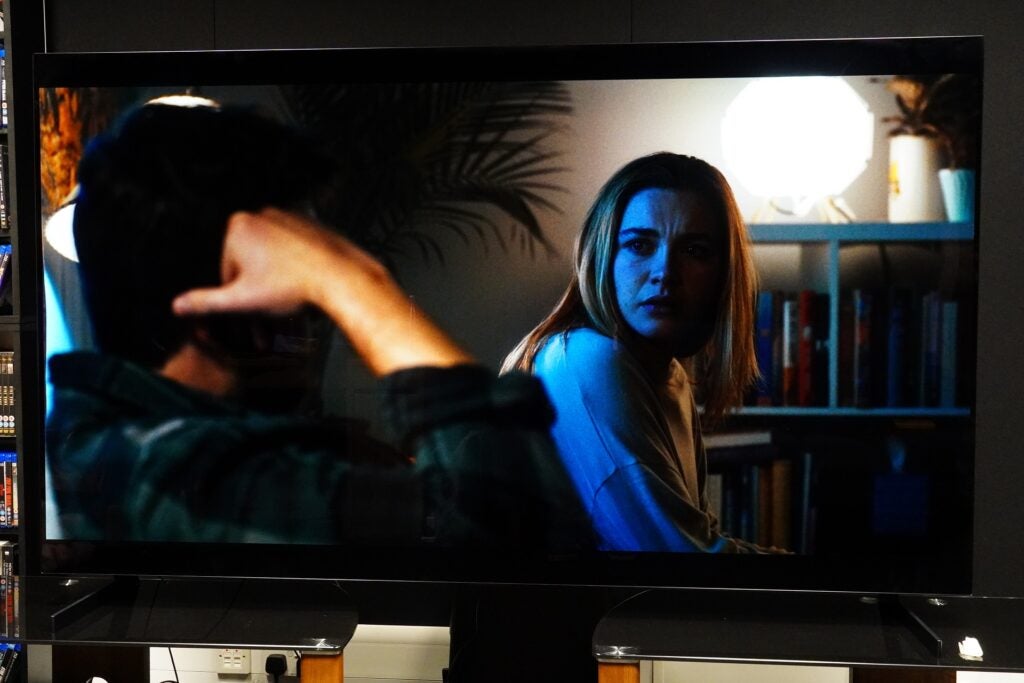
Stepping down to a HD Blu-ray of Ant-Man and it’s a satisfying performance as the TV unearths the various texture and detail of the intricately made superhero costumes, portraying the metallic surface of the Ant-Man helmet in convincingly beaten-up fashion.
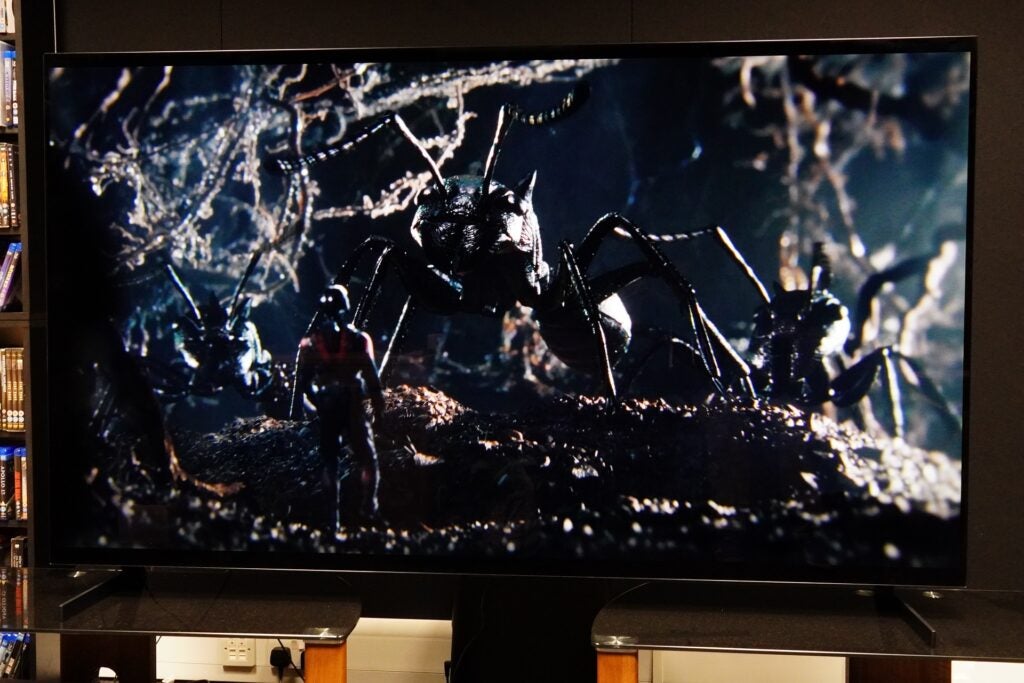
When Ant-Man shrinks down the Z2 digs into the intricate detail of the macro photography. If anything, the sheer scale of this screen size is the most enjoyable aspect.
And while Ant-Man isn’t the most colourful film with its slightly desaturated appearance that emphasises steely blue hues, dark browns, oranges, reds and greens; there’s a good range to colours (the pulsing orange of the Yellowjacket suit is nicely handled) plied with a firmness that ensures images hold up well at this size.
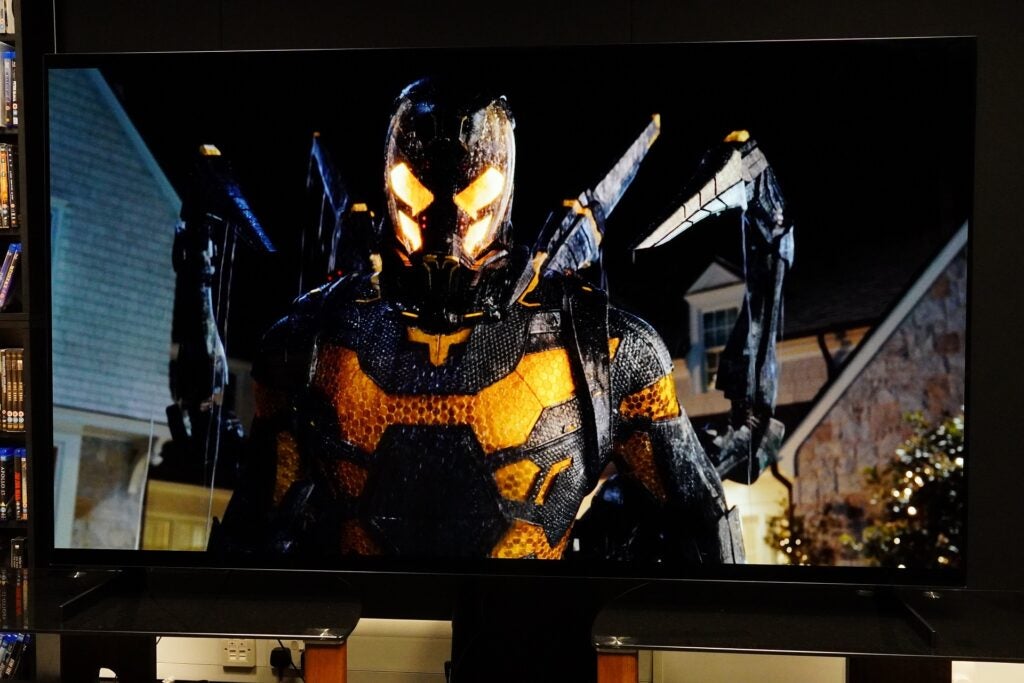
Dropping down to lower resolutions and an episode of Game of Thrones season 3 on DVD (And Now His Watch Is Ended), and there’s a not unexpected shortness of detail and sharpness with soft edges to characters and faces, the edge definition on the shields of the Unsullied soldiers is noticeably jagged.
Colours are approached in convincingly balanced manner, and the image avoids being noisy or smeary; but the upscaling doesn’t feel as if it improves on the source, more so that it holds the image together at this resolution.
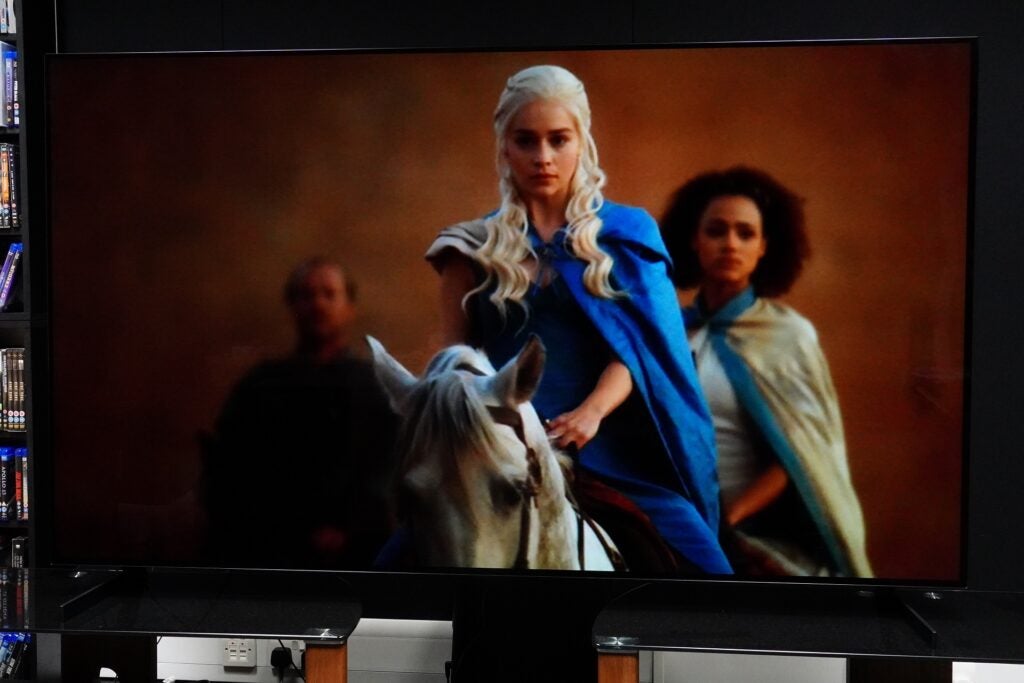
As you’d expect from OLED, black levels are excellent – the only issue was the sample suffered from a dead pixel. Colours retain their brightness at wider viewing angles, though you may find some lose their lustre quicker than others (such as yellow). Nevertheless, people can sit off-axis without having to worry much about reduced picture quality.
LG’s TruMotion processing continues its improvement with the Cinematic Movement mode. Watching the scene in Bad Boys II where Mike and Marcus are involved in a shoot-out with Haitians and the processing is lightly but effectively applied to maintain the film’s cinematic look.
Both Natural and Smooth Movement modes apply themselves with more force, and while they don’t cause as many artefacts as I’d have expected, there are instances where bullets start flying and dust and debris move at different speeds to other elements in the frame.
Shafts of light take on a more artificial tinge and the scene becomes more hyper-real as the edges of objects blur, and judder becomes noticeable. If you prefer motion applied then Cinematic Movement resolves motion the best – for sports, perhaps try one of the stronger options.
Sound Quality
- Big, wide soundstage
- Good clarity and sense of fine detail
- AI modes a little grating with non-Atmos content
With a 60W, 4.2 channel arrangement that supports Dolby Atmos, the overall performance is similar to the C2 and G2 but with better stereo imaging and a bigger soundstage.
The TV claims to produce a 7.1.2 virtual soundstage with Atmos content, but it doesn’t feel expansive – the action on screen is not any taller or wider, nor does it fire sound towards the viewer. With Infinity War, it’s a big and decently impactful presentation. Bass is not exactly booming, but there’s more punch than expected as Thanos hammers the Hulk with body shots. Vocals are prioritised within the soundstage to good levels of sharpness and detail.
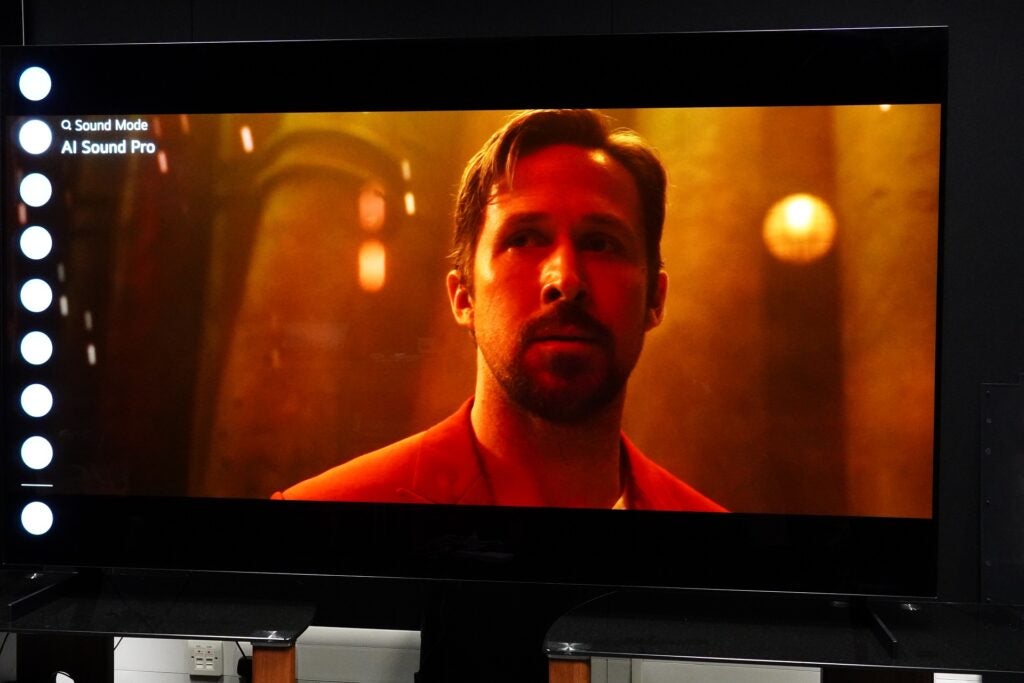
AI Sound Pro works best with Atmos – with other types of programming it exhibits sibilant traces – my preferred listening mode was Cinema, which offers energy, dynamism and a better grasp of vocals in action scenes such as those that frequent The Gray Man.
In The Last Duel there’s good impression of ambience in the quieter moments. The soundstage is described with width and subtle details are picked up on like the lick of fire on a candlelight in chamber scenes. Having turned the volume up to 100, I didn’t sense any bass distortion but again, bass isn’t that big to start with.
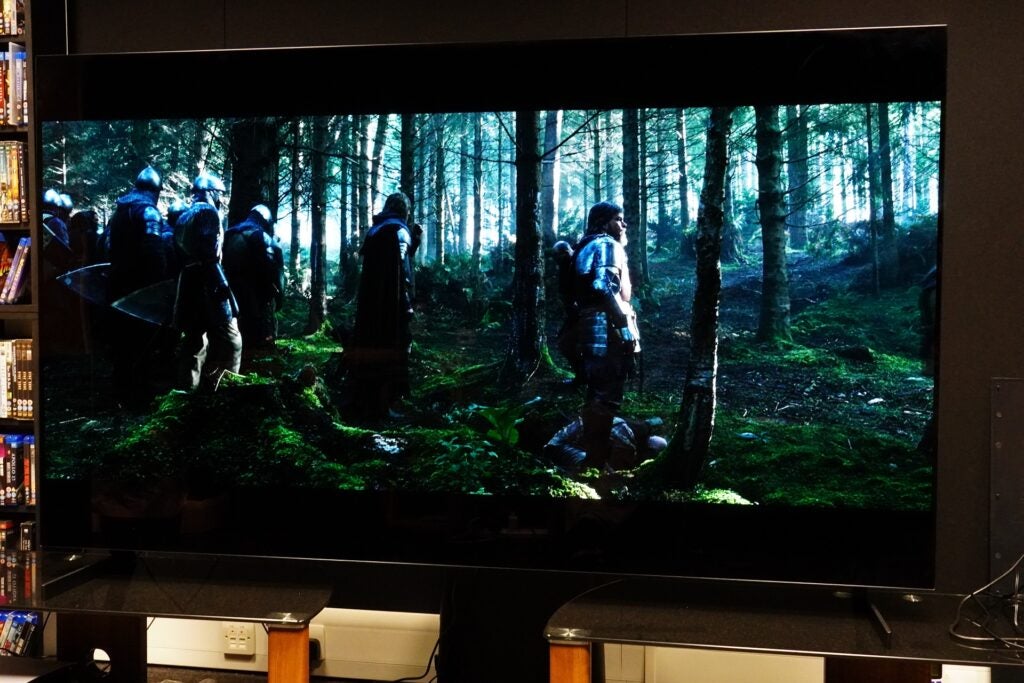
The Game Optimiser mode has similar traits to AI Sound Pro when playing Gran Turismo 7. At volume levels of around 50 it’s crisp presentation can sound thin and ragged, eventually becoming grating over prolonged periods as it ramps up engine sounds and music. Lower the volume and it’s more tolerable, but the smoothness of Standard mode is a better solution.
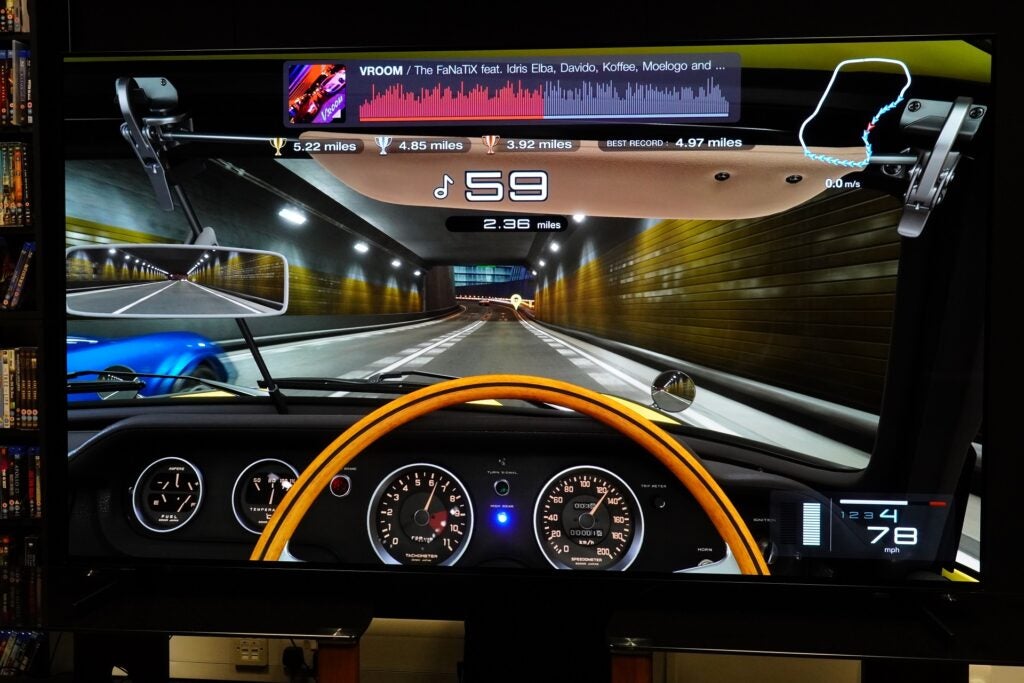
I do enjoy the stereo image the TV can deliver – overtake cars and you can hear them get larger in size and whizz past as you drive by. It’s slightly more involving in terms of creating depth in the soundstage.
I’d still recommend a soundbar system or surround sound package, especially for a screen of this size. On its own, this is a decent sounding system and certainly better than the performance of the 65-inch C2 and G2 OLEDs.
Latest deals
Should you buy it?
If you’re after a multi-talented TV The Z2 is great for gaming, boasts an enjoyable HDR image quality and a well-stocked feature set.
If you can’t easily afford a Ferrari £12k for a 77-inch TV is not for the masses. This is a TV footballers, CEOs and plastic surgeons would be in the market for.
Final Thoughts
From a technical perspective, the LG OLED77Z2 is an impressive achievement, capable of some great-looking images. Yet, it doesn’t truly feel like a big step up from the 4K OLEDs.
It’s chock-full of features and has a slick user experience that’s slowly improving. However, locking some apps behind an LG account sign-up is not a user-friendly decision.
£11,999 for an 8K OLED is a vast sum of money and given how Samsung has aggressively cut the price for its 75-inch 8K Mini LED to £4999 and Sony’s 85-inch Z9K Mini LED is £9499; this 8K OLED does not represent as good value in the current market.
How we test
We test every television we review thoroughly over an extended period of time. We use industry standard tests to compare features properly. We’ll always tell you what we find. We never, ever, accept money to review a product.
Find out more about how we test in our ethics policy.
Tested across three weeks
Benchmarked with tests
Tested with real world use
FAQs
The Z2 does not feature LG’s brightness boosting technology in the 77-inch model.
Full specs
Sustainability
Trusted Reviews’ holds the fact that global warming is not a myth as a core value and will continuously endeavour to help protect our planet from harm in its business practices.
As part of this mission, whenever we review a product we send the company a series of questions to help us gauge and make transparent the impact the device has on the environment.
We currently haven’t received answers to the questions on this product, but will update this page the moment we do. You can see a detailed breakdown of the questions we ask and why in our sustainability info page.








